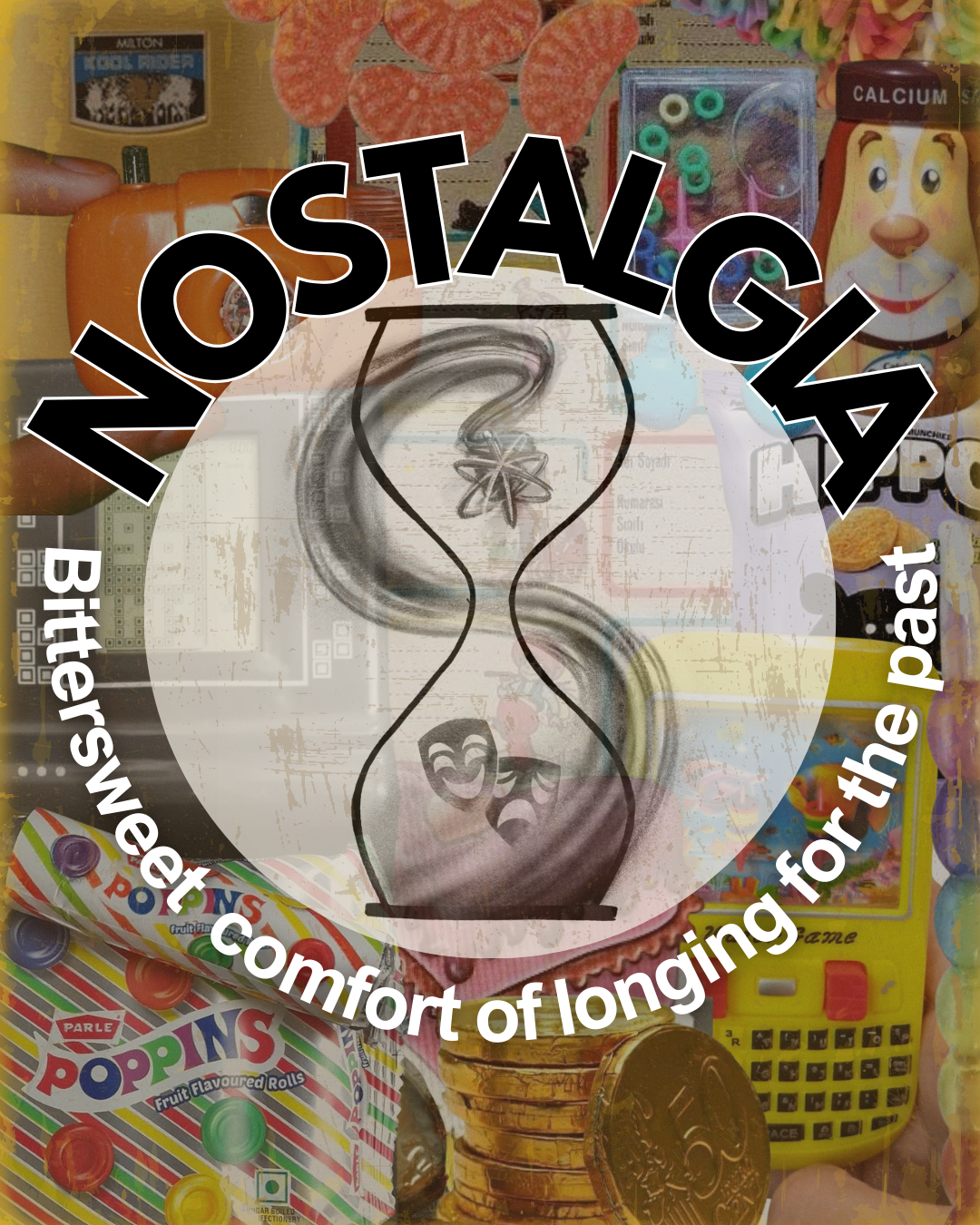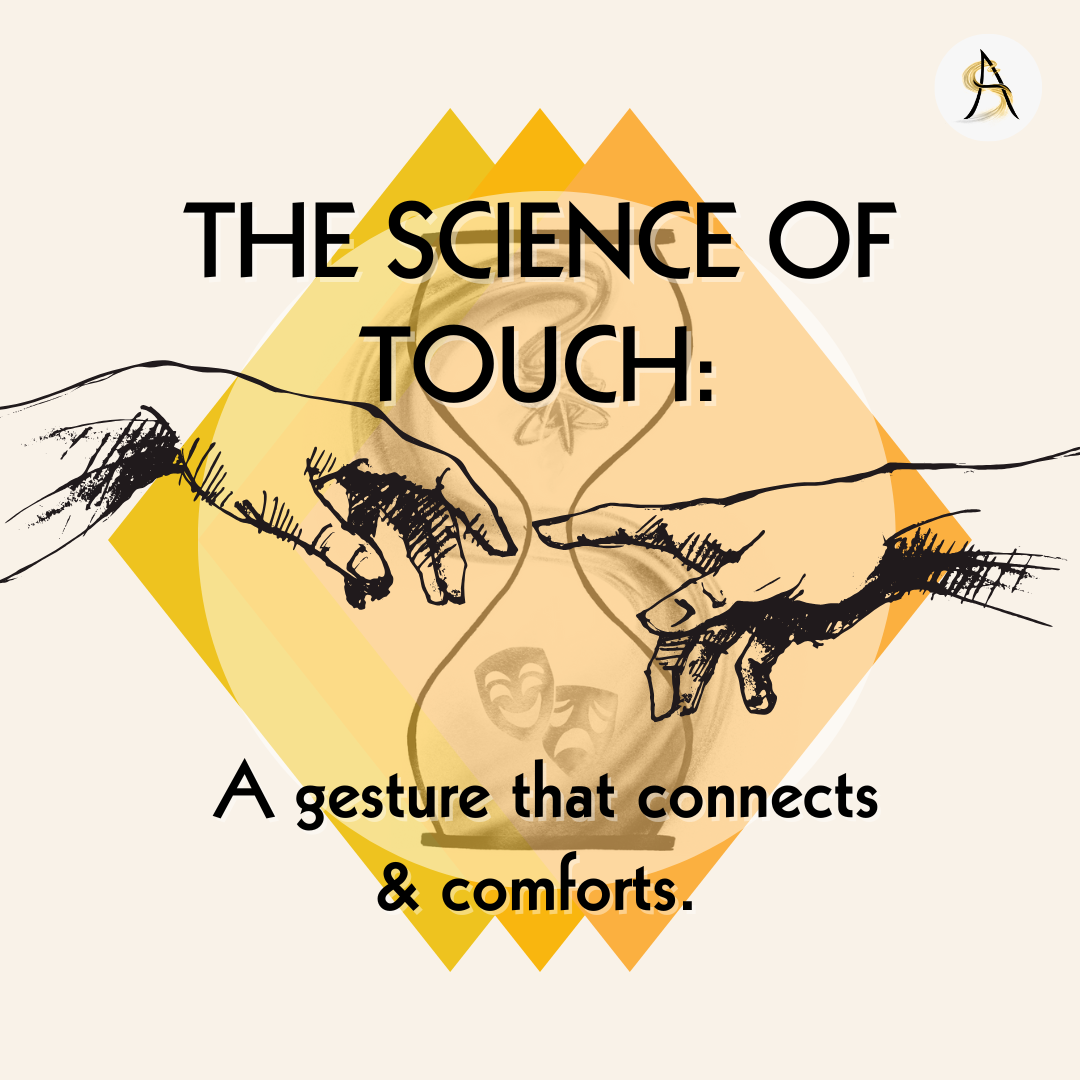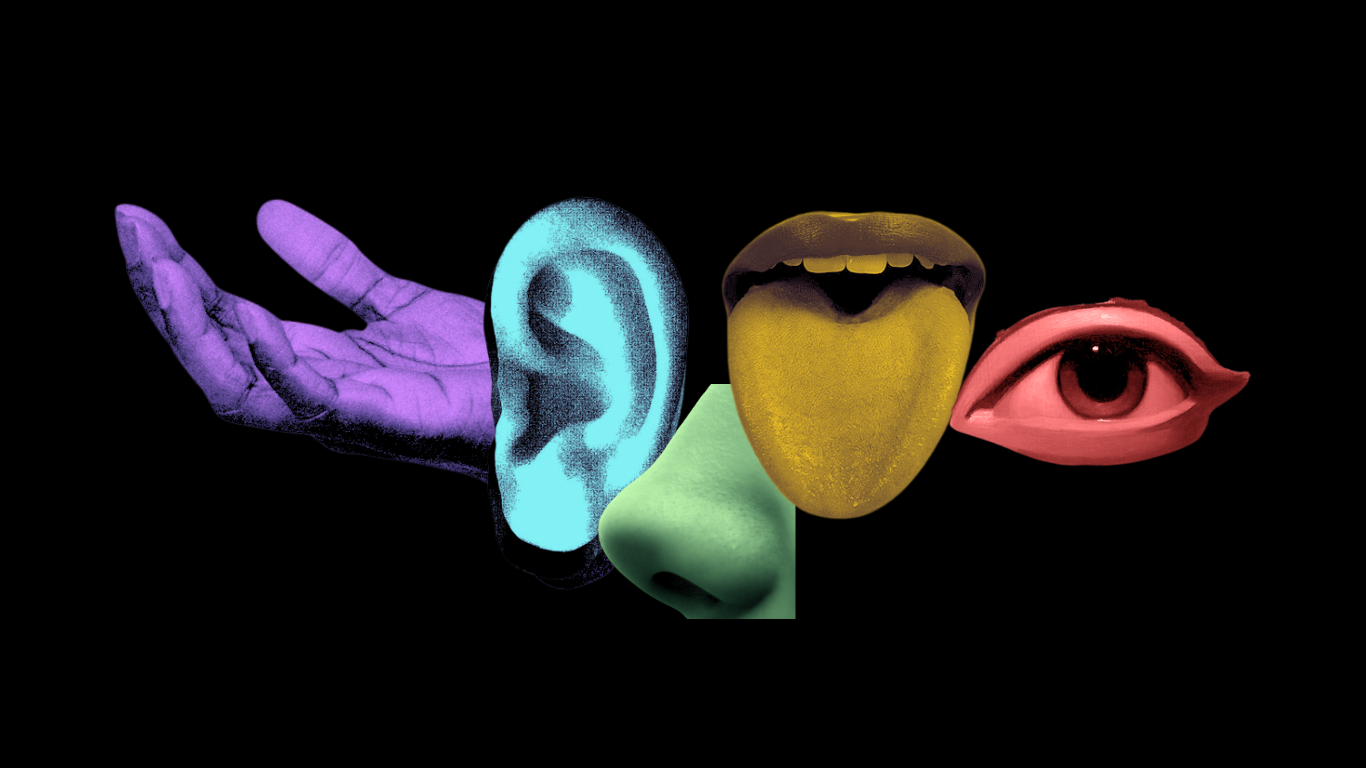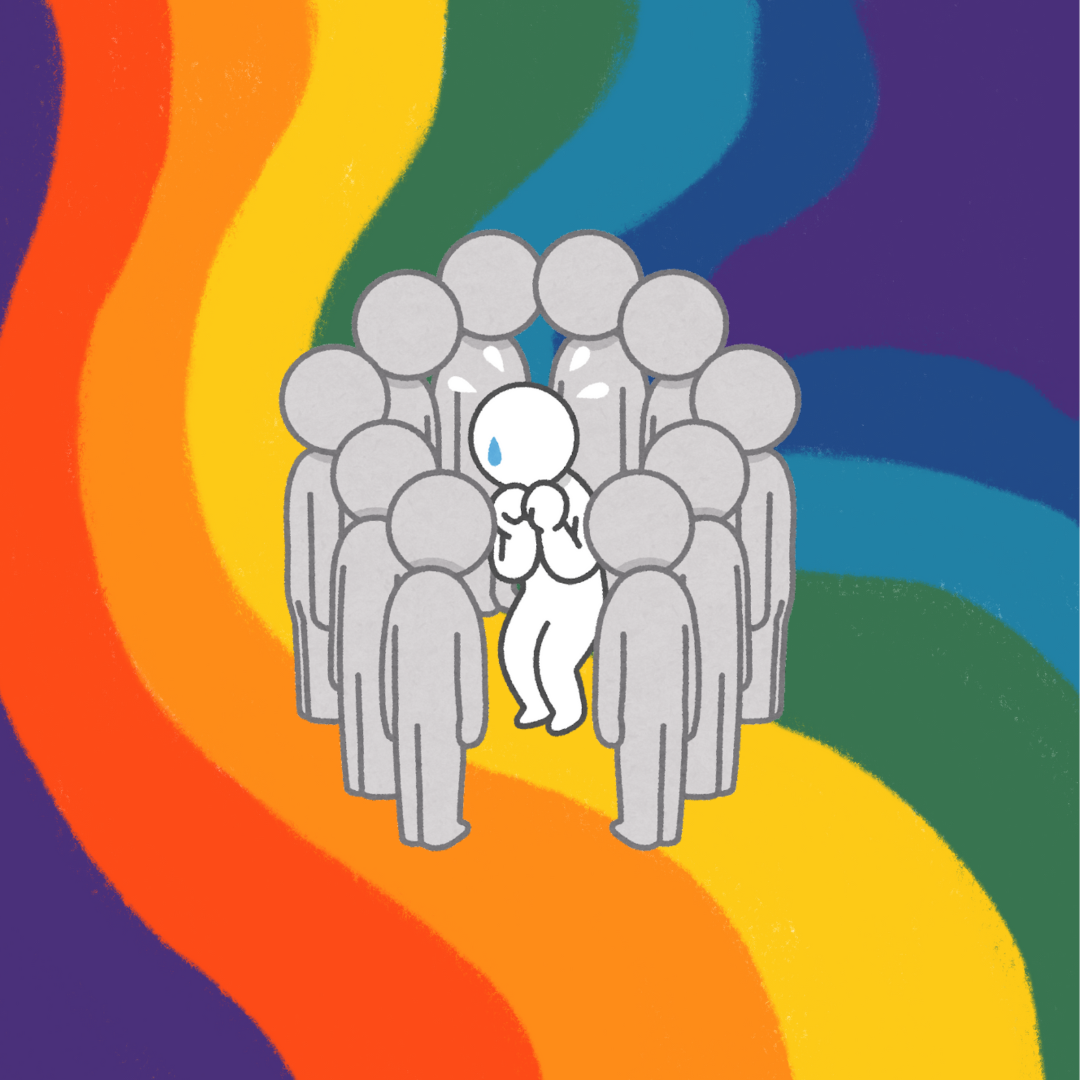ARISA (Advancement and Research in the Arts and Sciences) Foundation
Why are women angry
March 26, 2025
Do you have the “Angry Woman Syndrome”? In 1971, Dr. Nathan Rickles proposed the syndrome as an explanation for a woman’s expression of anger through “masculine” traits such swearing, jealousy, or promiscuity. And here are the symptoms-
Unprovoked anger outbursts
Marital Problems
Suicide attempts
Alcohol and drug abuse
Critical attitude towards others
Obsessive need to excel
Intense need for punctuality and neatness
In simpler words, if your emotional expression does not fall under the rigidly limited options of compassion, passivity, and docility laid out by a patriarchal system you are eligible for the “angry woman syndrome” label. Dr Rickles wasn’t entirely wrong. Upon reading this research study, I too, started to manifest some of the symptoms!
Dr Rickles proposed this theory after examining three case studies of dissatisfied women, published by the Archives of General Psychiatry. Since its publication, this theory has been adapted to perpetuate stereotypes against women, especially the doubly oppressed classes (e.g Angry Black Woman Syndrome (Lawson, 2018) where the women are oppressed based on race and sex). Unfortunately, this theory does not do justice to its name. While I am angry, my anger is not directionless nor unprovoked. I have been credited with misattributing everything to patriarchy and colonialism – but I refuse to accept it as a misattribution. What if I told you we, as women, can reclaim the forbidden emotion of anger? What if I told you, your anger isn’t misplaced but the reasons for it have been drastically normalized and underplayed by our society? Let me introduce you to Female Rage.
Anger is a universal emotion. All of us have felt angry at one point in our lives. While it is widely accepted and expected, this courtesy is not extended to women (I will only focus on women, as coupling their struggles with the queer and LBTQIA+ struggles would not do either of them justice. Instead, it would support the argument that puts Man in the center of the Universe and defines everything else by its relationship to the Man).
While the angry young man is a hoot and beloved, an angry young woman is a buzzkill. This isn’t an advent of modern times; this is an archaic attitude towards women that has been deeply ingrained starting from something as old as religious texts. Except, of course, the texts where women are written to have an emotion spectrum of a non-player character (NPCs) in a video game. : ) Let us take for instance religious mythology where women are modeled as selfless, nurturing, compassionate, loving, ever so docile I-will-follow-my-husband-into-a fire/exile. Any woman who deters from this set-course is chastised. Citing religion always invites criticism but it is crucial to understand the role religion plays in patriarchy and the subjugation of woman. Religious stories set precedents for acceptable human behavior. Add a touch of divinity and this becomes akin to law. But when religious mythology becomes a product of mindless mass consumption it stops being treated as a text and more as a doctrine that reinforces systemic inequalities. Unfortunately, the malice of such doctrines has found its way into judicial laws, making many of women’s basic rights illegal. For instance, the repressive idea of a wife being the property of a man is well documented in religion (Dharmaraja gambling away Draupadi, Mahabharat). This sentiment is reflected in Section 375 which does not consider marital rape as an offence. This does not consider consent of the women, or her sexual agency instead reinforces the idea of a wife belonging to the husband.
Traditionally, the law is seen as a body of objective, just, and impartial reason in a world that believes in the emotion/reason duality (Čufar, 2023). Therefore, the unjust treatment of women by the law not only condemns them to live as second-class citizens, it also directly feeds into the narrative of women being emotional and unreasonable. While womankind does have its crowning-jewel feminism to challenge these systems, feminism has gained a bad rep for being anti-men. However, this misrepresentation stems from a lack of etymological awareness. Ironically enough, the term Feminist (root word féministe from French) first appeared in the misogynistic texts of Alexander Dumas Fils (1872) who used the word to refer to men who support the women’s right movement. While the term itself was coined by another man, Ferdinand-Valère Fanneau de La Cour, for his thesis entitled “On Feminism and Infantilism in Tuberculosis Patients”. History as evidence, women had little to do with coining, defining, and contributing to the misrepresentation of feminism. Of course, there are exceptions to this, hence, p <0.001 but never exactly zero.
Tragically, we make sense of the world through the language we have inherited with all its existing flaws. In the 1950s, Ferdinand Saussure, a prominent figure in structuralism said that words do not have intrinsic meanings but are defined by the relation they share with the other words in each vocabulary. Especially paired words (e.g. night/day or male/female) each designates the absence of the characteristics of the other. And it is because of this characteristic of language that we perceive everything in binaries – Night is the absence of the sun while Day denotes the presence of the sun. But the implications of such binaries are far worse when it comes to defining words such as “normal” and “feminine”. Therefore, when we define something as normal, we are automatically deeming everything that doesn’t match this description as not normal by creating an in group/out group competition. Similarly, when we claim patriarchy as a “normal” way of life, we are denying millions of people their right to “normalcy” for lacking patriarchal characteristics. A large portion of the population subjugated to live as second-class citizens in a system that wasn’t made for them, speaking a language that doesn’t even begin to articulate the multigenerational anger.
For millennia womankind has faced paralyzing violence, hatred, and injustices that have left us helpless. Women’s anger, often relegated to the margins of societal discourse, emerges as a potent response to systemic power imbalances and personal injustices. This anger is not merely an emotional outburst; rather, it represents a rational reaction to pervasive feelings of powerlessness. In contemporary discourse surrounding feminism, the perception of women's anger has often been misconstrued as irrational or misandrist. However, as Turkel (2017) posits, anger can be viewed not merely as an emotional response but rather as a powerful declaration of self-respect. This perspective challenges the reductive notion that women’s anger is inherently destructive; instead, it positions such expressions of ire within a historical context where women's voices have been systematically marginalized. By framing their anger as a legitimate reaction to oppression and inequality, women reclaim agency over their emotions and narratives.
The Female Rage phenomenon is not merely an emotional response but rather a complex interplay of historical oppression and societal expectations that compel women to suppress their legitimate grievances. The etymology of "anger," derived from the Latin "angere," meaning to choke or strangle, poignantly encapsulates the suffocating experience of those who are denied the agency to express their rage. Such repression often manifests physically, as chronic stress responses lead to psychosomatic ailments, creating a vicious cycle where unacknowledged trauma festers within the body. Women, conditioned to prioritize familial harmony over personal expression, frequently exhibit symptoms such as anxiety and depression—conditions historically trivialized in patriarchal discourse. Ironically, while society expects women to embody resilience and nurturing qualities, this expectation paradoxically exacerbates their suffering by invalidating their lived realities.
As women navigate the expectations to prioritize others’ needs above their own, they often experience burnout and resentment, which can exacerbate mental health issues such as anxiety and depression. Research conducted by the World Health Organization (2020) found that over 30% of women worldwide have experienced physical or sexual violence, most often perpetrated by intimate partners. Such experiences can lead to Post-Traumatic Stress Disorder (PTSD), depression, and chronic anxiety, illustrating the direct impact of patriarchal subjugation on women’s mental health. Moreover, the historical underinvestment in women's healthcare further complicates this landscape (Acer, 2023). The lack of accessible mental health care disproportionately affects women impacted by patriarchy. In many countries, mental health services are scarce, stigmatized, or gender-biased, leaving women without adequate support. A 2021 report by the Mental Health Foundation emphasizes that women often feel marginalized within healthcare systems, leading to underdiagnosed and untreated mental health disorders.
But a woman’s rage doesn’t always lead to destruction. In one of the preliminary studies on emotions Roseman et al (1994) found that the goal of a person expressing anger is to change a distressing behavior. Anger lays the foundation for revolutions. This anger is not irrational or destructive; it is a powerful, necessary response to oppression, one that has fueled generations of resistance and change. It allows us to recognize and confront systemic inequalities that might otherwise go unnoticed. So, reclaim the stereotype and let your rage lead to the destruction of oppressive systems.
References
Acer (2023). [PDF] The Impact of patriarchy on Women's mental health and Well-being. Retrieved from https://jetir.org/papers/JETIR2305260.pdf.
Čufar, K. (2023). Prescriptive Descriptions: Reason-Emotion Binary through Feminist Critique. Legal Reasoning and Cognitive Science: Topics and Perspectives, 1-24.
Fayolle, C. (2018). Des corps «monstres». Historique du stigmate féministe. GLAD!. Revue sur le langage, le genre, les sexualités, (04).
Keltner, Dacher & Gruenfeld, Deborah & Anderson, Cameron. (2003). Power, Approach, and Inhibition. Psychological review. 110. 265-84. 10.1037/0033-295X.110.2.265.
Lawson, R. M. (2018). Perceived anger: Exploring the angry black woman syndrome and its effect on african american female corporate leaders (Doctoral dissertation, Northcentral University).
Ranjan, A. (2022). The impact of patriarchal norms on women's mental health: A global perspective. Journal of Gender Studies, 31(3), 345-358.
World Health Organization. (2020). Violence against women prevalence estimates, 2018. Retrieved from https://www.who.int/publications/i/item/9789240002830
Mental Health Foundation. (2021). The importance of gender in mental health. Retrieved from https://www.mentalhealth.org.uk/publications/gender-mental-health
Rickles, N. K. (1971). The angry woman syndrome. Archives of general psychiatry, 24(1), 91-94.
Roseman, I. J., Wiest, C., & Swartz, T. S. (1994). Phenomenology, behaviors, and goals differentiate discrete emotions. Journal of personality and social psychology, 67(2), 206.
Turkel, A. R. (2000). Commentary: The “Voice of Self–Respect”: Women and Anger. Journal of the American Academy of Psychoanalysis, 28(3), 527-539.

February 25, 2025
This winter break, as I sit in my childhood bedroom, where I once filmed silly YouTube videos, tried my hand at DIYs, poured over textbooks for board exams, and went through the entire university application process, a wave of nostalgia crashes over me. It’s strange to think I’ll never be that child again: the one who would be begrudgingly dragged out of her bed for school but found joy in the little moments, daydreaming about adulthood, and believing there was so much time ahead. Nostalgia has a way of creeping up on you, it’s not just about missing the past; it’s about the warmth of revisiting those moments in your mind. Sitting here now, I realize how much my childhood has shaped me, how the sound of laughing with friends, the scribbles in my notebooks, and even my father’s screams to wake me up early in the morning are now fragments of a life I can only revisit in my memory. Nostalgia reminds me of who I was, offering a bittersweet comfort in how far I’ve come. Defining Nostalgia In the 17th century, Swiss physician Johannes Hofer coined the term “nostalgia” to describe the longing soldiers felt to return home, considering it a cerebral disease (Beck, 2013). Today, nostalgia is seen as a source of comfort, allowing us to reflect on cherished moments like our childhood. These memories often resurface during challenging times, offering reassurance and emotional stability (Wang et al., 2024). Nostalgia wasn’t always viewed positively. Professor David Gerber from Buffalo University highlights that society has only recently begun to see nostalgia as beneficial. He explains that even painful memories, when approached constructively, can help individuals navigate the massive changes that challenge their identities (Kidwell, 2019). Psychologist Erica Hepper from the University of Surrey notes that nostalgia is particularly common among young adults. Since they experience significant transitions, such as leaving home or starting a new job, nostalgia helps them cope by providing a sense of stability (Austin, 2022). It allows them to draw strength from fond memories, countering feelings of anxiety, loneliness, or depression. How the Brain Processes Nostalgic Memories At the heart of nostalgia are three key brain regions that play vital roles in processing memories and emotions: The Hippocampus: Responsible for memory formation and recall, the hippocampus is essential for retrieving autobiographical memories (Wiltgen et al., 2010). When we experience nostalgia, the hippocampus plays a crucial role in retrieving self-referential memories—personal experiences tied to our sense of identity—which, when recalled, often evoke vivid details and strong emotional connections. The Amygdala: This region is central to emotional processing. It attaches emotional significance to memories, which explains why nostalgic experiences are often tied to feelings of warmth, joy, or longing (Professional, 2024). The Prefrontal Cortex: The medial prefrontal cortex (mPFC) plays a crucial role in self-reflective thinking. When we experience nostalgia, the mPFC helps us contextualize past memories within our current sense of self, enabling us to reflect on how our experiences have shaped who we are today (Yang et al., 2022). Sensory Cues One of the strongest sensory triggers for nostalgia is smell, a connection that has been extensively studied by cognitive neurobiologist Howard Eichenbaum. Their research demonstrated that odours interact directly with the limbic system, particularly the hippocampus, where memories are formed and retrieved, and the amygdala, which processes emotional significance. Unlike other sensory inputs, which must first pass through the brain's thalamus, olfactory signals have a direct pathway to these regions, making scent a uniquely potent trigger for vivid, emotionally rich recollections (Holohan, 2012). Scents like baked goods and other cooking aromas are especially potent in triggering nostalgic memories (BBC, 2014). This link between scent and memory is just one example of how different sensory cues shape nostalgia. Music, for instance, is another powerful trigger, often reviving memories with striking emotional clarity. Like scent, music engages the limbic system, particularly the hippocampus and amygdala, reinforcing the idea that nostalgia is deeply intertwined with the brain’s emotional and memory-processing mechanisms. Interestingly, a study by Cornell University and UC Santa Cruz found that nostalgia for music extends beyond personal experiences. College-aged participants reported feeling nostalgic for songs from their parents’ youth, such as those from the 1960s and 1980s, likely because these songs were frequently played during formative years (Beck, 2013). This is can also be linked to known as anemoia, the feeling of nostalgia for a time one has never personally experienced. Traditionally, nostalgia has been understood as a longing for one’s own past experiences, but philosopher Felipe De Brigard challenges this view by emphasizing the role of imagination in memory reconstruction. He argues that nostalgia can also stem from idealized portrayals of the past, shaped by cultural narratives and historical storytelling (Jarrett, 2023). Shows like Bridgerton or Bollywood films set in pre-independence India can evoke a sense of longing for a time one has never lived in, making one feel like they were “born in the wrong era” despite the portrayals being highly selective. They present a rose-tinted version of history, glossing over systemic inequalities, rigid social hierarchies, and the struggles of marginalized communities. Why We Crave Nostalgia In 2025, cultural trends seem to be looping back to the past, with everything from movies and music to fashion trends. Blockbuster films like Barbie and Fashion Trends like Y2K dominate the digital landscape, raising a central question: Have we truly run out of new ideas, or is there a deeper desire to revisit the moments, people, and things we know and love? Nostalgia as a Reflection of Self Psychologist Krystine Batcho explains that nostalgia helps us reconnect with past versions of ourselves, offering stability in an ever-changing world. (Does Nostalgia Have a Psychological Purpose? With Krystine Batcho, PhD, n.d.) Revisiting familiar media and experiences reinforces our identity, reminding us of where we’ve come from and how we’ve grown. It provides a sense of continuity, making us feel grounded when the present feels uncertain. Nostalgia as a Coping Mechanism In times of crisis, nostalgia provides refuge and a sense of control. The COVID-19 pandemic, with its isolation and uncertainty, fueled a surge in nostalgic media as people turned to familiar stories, music, and cultural symbols for reassurance. Nostalgia can help ease feelings of loneliness by connecting us to shared memories and experiences. When the present feels overwhelming, looking back at times that felt simpler and more stable can be a powerful way to process emotions and regain perspective (Gharat, 2024). Nostalgia in Troubling Times More than just escapism, nostalgia helps us make sense of our past, even reframing difficult experiences. As time passes, the emotional intensity of past struggles fades, allowing us to see them as part of our personal growth rather than just sources of pain (Davis, 2019). Nostalgia also reinforces resilience—by remembering how we’ve navigated challenges before, we gain confidence in our ability to overcome present and future difficulties. Ultimately, nostalgia serves several important psychological functions: it offers a tool for self-reflection, provides a coping mechanism for managing current challenges, and reinforces our sense of continuity and control. By revisiting past experiences, whether they were happy or difficult, we are reminded of how far we’ve come and of the resilience that defines us. In uncertain times, nostalgia provides both comfort and hope, helping us process the present while reinforcing the belief that things will improve again, just as they have in the past. Blog written by Guest Writer: Nidhi References: Austin, D. (2022, August 21). When looking back helps us move forward, or how nostalgia can be good. Washington Post. https://www.washingtonpost.com/health/2022/08/21/nostalgia-restorative-first-aid-emotion/ BBC. (2014, September). Science & Nature - Human Body and Mind - Nostalgic smells. https://www.bbc.co.uk/science/humanbody/mind/articles/intelligenceandmemory/nostalgicsmells.shtml Beck, J. (2013, August 14). When nostalgia was a disease. The Atlantic. https://www.theatlantic.com/health/archive/2013/08/when-nostalgia-was-a-disease/278648/ Davis, F. (2019, October 3). Nostalgia: Why it’s good for you. Silver Century Foundation. https://www.silvercentury.org/2019/10/nostalgia-why-its-good-for-you/ Gharat, A. (2024, April 24). How nostalgia can help overcome loneliness. Insights. https://insights.lifemanagementsciencelabs.com/how-nostalgia-can-help-loneliness/#:~:text=Nostalgia%2C%20often%20associated%20with%20warm,is%20wired%20for%20autobiographical%20memories. Jarrett, C. (2023, September 26). Anemoia: the psychology behind feeling nostalgic for a time you’ve never known. BBC Science Focus Magazine. https://www.sciencefocus.com/the-human-body/anemoia-nostalgia Kidwell, R. (2019, October 15). The science behind nostalgia. The Odyssey Online. https://www.theodysseyonline.com/science-behind-nostalgia Smells like nostalgia: Why do scents bring back memories? (2012, July 19). NBC News. https://www.nbcnews.com/healthmain/smells-nostalgia-why-do-scents-bring-back-memories-895521 Wang, Y., Wildschut, T., Sedikides, C., Wu, M., & Cai, H. (2024). Trajectory of nostalgia in emerging adulthood. Personality and Social Psychology Bulletin, 50(4), 630–644. Society for Personality and Social Psychology, Inc. https://www.southampton.ac.uk/~crsi/Wang,%20Wildschut,%20Sedikides,%20Wu,%20&%20Cai,%202024.pdf Wiltgen, B. J., Zhou, M., Cai, Y., Balaji, J., Karlsson, M. G., Parivash, S. N., Li, W., & Silva, A. J. (2010). The hippocampus plays a selective role in the retrieval of detailed contextual memories. Current Biology, 20(15), 1336–1344. https://doi.org/10.1016/j.cub.2010.06.068 Yang, Z., Wildschut, T., Izuma, K., Gu, R., Luo, Y., Cai, H., & Sedikides, C. (2022). Patterns of brain activity associated with nostalgia: A social-cognitive neuroscience perspective. Oxford Academic, 17(12), 1131–1143. https://academic.oup.com/scan/article/17/12/1131/6585517?login=false Young adults are fond of their parents’ music, too. (2013, September 11). Cornell Chronicle. https://news.cornell.edu/stories/2013/09/young-adults-are-fond-their-parents-music-too

By Sharvari Raste
•
December 25, 2024
Did you know we have eight senses? Yes, eight! When we think of our ‘senses’, the five we were taught in school- sight, hearing, touch, taste, and smell- are most often the ones which come to mind. The ones that help us perceive and make sense of our external surroundings and help us paint pictures of the world in our minds. But there are 3 other crucial senses which help us understand the world and our own bodies: interoception, proprioception, and the vestibular sense. These are our internal senses, and they work subconsciously, backstage, helping us navigate our experiences. Have you ever had that fluttery, nervous feeling in your stomach before speaking in front of a crowd? That’s your interoceptive sense picking up on your anxiety. Or maybe you’ve walked through a dark room and instinctively avoided bumping into furniture? That’s proprioception, your subconscious awareness of where your body is in space. And that steadying feeling when you regain balance after ALMOST slipping? That’s your vestibular sense, making sure you stay upright and coordinated. These three senses are extraordinary, connecting us not just to our environment but to ourselves. Together, they form the foundation of our everyday experiences, how we perceive and live them. Let’s explore these fascinating senses, the neuroscience behind them, and discover the many ways they play into our everyday lives. Interoception: The Body’s Internal Voice What is Interoception? Interoception helps us sense and perceive the body's internal state by receiving and processing sensory information from the body. It is how our nervous system processes what is going on inside the body. This sense helps us recognize when we’re hungry, thirsty, stressed, tired or sleepy. It helps our bodies maintain a ‘stable’ sustainable state, known as homeostasis. It also plays a role in feeling and understanding our emotions, by giving us physical signs. (Dunn, Galton, Morgan, 2010). For instance, when we feel a flutter in our stomach when we're excited, or when a sad movie brings that lump to our throat—it's our interoceptive sense giving us a physical experience of the emotions we're feeling! Interoception helps us tune into the communication between our brain and our body Think of interoception as your best friend It anticipates your needs and worries, tells you when you’re making a bad decision, accompanies you through all your experiences and helps you feel and sense the happy and the sad moments in life. How Does Interoception Work? Interoception relies on sensors in our organs, skin, and muscles that pick up signals given by our body, like changes in our heartbeat, stomach activity, or breathing. - These signals travel to the brain through a nerve called the vagus nerve - the main nerve of our body responsible for involuntary functions such as heartrate, digestion, and so on - and through other pathways. Once the brain receives these signals, it processes them in different areas of the brain, like: - The insula, which helps us become aware of our internal sensations. - And the anterior cingulate cortex (ACC), which connects these sensations to emotions and decisions. This is how we connect physical signals to our experiences and emotions. A great example of this, could be how we associate a racing heart and sweaty palms to fear. Activity Time! Here is a small activity to test your interoceptive sense! Interoception-Deep Breathing Test: Sit quietly, close your eyes, and focus on your breath. Take deep breaths and relax. Notice how your chest and abdomen rise and fall. Ask yourself: Can you feel your heartbeat without touching your chest? Keep trying! Proprioception: Knowing Where You Are What is Proprioception? Proprioception is our body’s sense of position and the perception of bodily movement. It tells us where our body is in a space. This is important for our everyday movements and it helps us perform activities like walking, picking up objects, or scratching an itch without needing to look. (Tuthill & Azim, 2018) Do you know of those video games where we can see ourselves from above and, therefore, know where we are and what our surroundings are so that we can move accordingly? That is the proprioceptive sense! It acts as our body’s subconscious navigation system that tells us where we are in our immediate environment. How Does Proprioception Work? Proprioception depends on special sensors called proprioceptors, found in our muscles, tendons, and joints. These sensors detect various movements of our muscles and joints and how much we move them. There are 3 types of proprioceptors (Tuthill & Azim, 2018): - Muscle spindles: sense when muscles stretch and help the body know its position. - Golgi tendon organs: monitor tension in muscles to prevent overexertion. - Joint receptors: provide information about the movement of our joints and its limits. These signals are sent to the brain through the spinal cord. Once they are in the brain: - The somatosensory cortex helps identify the position and movement of body parts. - Then, our cerebellum fine-tunes our movements, ensuring they are smooth and coordinated. For example, when you reach for a cup, the proprioceptors tell your brain exactly where your hand is and how much to extend it to grab the cup properly. Activity time! Give this activity a go to engage your proprioceptive sense! Closed-Eye Arm Test: Extend one arm straight out to the side. Close your eyes and slowly bring your arm forward to touch your nose. Did your finger find your nose without needing to open your eyes? That’s your proprioceptive sense at work! Vestibular Sense: Staying Balanced What is the Vestibular Sense? The vestibular sense helps maintain our balance become aware of our motion, and coordinate the rest of our bodies to accommodate for movement. It tells us which way is up and down and helps us reposition and reorient ourselves accordingly. It lets us walk upright, keep our balance on uneven ground, and know when our body is tilting or spinning (Beraneck, Mathieu, Elliott, Glover, & Straka, 2023) Our proprioceptive sense creates an awareness of our body’s position in our surroundings and the vestibular sense moves to perceive and balance our bodies according to our own movements. Just like how a tightrope walker uses a long pole to balance themselves, or a Weeble toy always reverts to an upright position, our bodies use the vestibular sense in the same way! How Does the Vestibular Sense Work? Our vestibular system is located in the inner ear and includes: - Semicircular canals, which sense when your head turns or rotates. Inside these semicircular canals, there’s a fluid that moves when your head rotates. This movement bends tiny hair cells, which send signals to your brain about the rotation. - Otolith organs (the utricle and saccule), which detect up-and-down or side-to-side movements and changes in head position relative to gravity. In the otolith organs, small crystals shift when you move or tilt your head. This kind of bending also activates hair cells that inform your brain about straight-line movement or tilting. - These signals are sent to the brainstem and cerebellum, where they’re combined with information from your eyes and the rest of your body to form and perceive any imbalance in bodily or head orientation. - This helps maintain your balance and posture. For example, when you trip, the vestibular system helps you quickly adjust and regain balance. Most of the input received by the vestibular system are a result of our own actions! Activity Time! Try this activity out to getter a better sense of how this sense works! Walking in a Straight Line: Close your eyes and try to walk in a straight line for a few steps. Notice whether your body stays aligned or if you tend to veer off to one side! Experience how our vestibular sense works even with our eyes closed i.e., without visual input! A Unified Experience. These three senses constantly coordinate with each other and the external senses to give us a comprehensive awareness of our lives. Each one of these 8 senses has some role to play in every interaction we have with the world. Even in memory, when we think about any event or experience, we remember aspects created by each of these senses. Even if you’re doing something as simple as walking, all of these senses come together to give you small but important components of that experience – your eyes see a couple of butterflies, your ears hear the sounds of birds, your vestibular sense makes sure you are maintaining your balance while looking around, your proprioceptive sense makes sure you don’t bump into anything and even your interoceptive sense makes you aware of how tired your body is through your sweat and breathing patterns! Conclusion Interoception, proprioception, and the vestibular sense are the unsung heroes of our sensory systems. They operate in the background such that we do not have to pay conscious attention to these aspects of balance, spatial orientation and whether we need food or not. By understanding these senses, we can better understand and appreciate how our brain and body work together to create a seamless and memorable experience of the world and help us become more in tune with ourselves. Try spending a day consciously tuning into these internal senses! Whether you’re out and about or spending the day in the comfort of home, see what it is like to spend the day with 8 senses instead of 5. It’s sure to be a unique and interesting experience! Written by Sharvari Raste (Student) Mu, Y. (2023). Understanding Interoception and Its Importance in Body and Mind Functions: A Review. International Journal of Social Science and Humanity. Murphy, J. (2024). Interoception: Where do we go from here? Quarterly Journal of Experimental Psychology, 77(2), 223-229. Garzorz, Isabelle & Deroy, Ophelia. (2020). Why There Is a Vestibular Sense, or How Metacognition Individuates the Senses. Multisensory Research. 34. 1-20. 10.1163/22134808-bja10026 Khalsa, Sahib & Adolphs, Ralph & Cameron, Oliver & Critchley, Hugo & Davenport, Paul & Feinstein, Justin & Feusner, Jamie & Garfinkel, Sarah & Lane, Richard & Mehling, Wolf & Meuret, Alicia & Oppenheimer, Stephen & Petzschner, Frederike & Pollatos, Olga & Rhudy, Jamie & Schramm, Lawrence & Simmons, William & Stein, Murray & Burrows, Kaiping. (2018). Interoception and Mental Health: A Roadmap. Biological Psychiatry: Cognitive Neuroscience and Neuroimaging. 3. 10.1016/j.bpsc.2017.12.004. Khan, Sarah & Chang, Richard. (2013). Anatomy of the vestibular system: A review. NeuroRehabilitation. 32. 437-43. 10.3233/NRE-130866. Cullen, K. E., & Zobeiri, O. A. (2021). Proprioception and the predictive sensing of active self-motion. Current opinion in physiology, 20, 29–38. https://doi.org/10.1016/j.cophys.2020.12.001 Tuthill JC, Azim E. Proprioception. Curr Biol. 2018 Mar 5;28(5):R194-R203. doi: 10.1016/j.cub.2018.01.064. PMID: 29510103. Dunn BD, Galton HC, Morgan R, et al. Listening to your heart. How interoception shapes emotion experience and intuitive decision making. Psychological Science. 2010 Dec;21(12):1835-1844. DOI: 10.1177/0956797610389191. PMID: 21106893.\ Beraneck, Mathieu & Elliott, Karen & Glover, Joel & Straka, Hans. (2023). Editorial: Development of the vestibular system. Frontiers in Neurology. 14. 10.3389/fneur.2023.1191086.

By Kohinoor Darda
•
November 22, 2024
Have you ever noticed how good it feels to be hugged by someone you love? Or how putting a baby to sleep by patting them helps them feel at ease? And have you also noticed how sometimes other people’s skin feels softer than your own when you touch it? These experiences hint at something profound: touch has a unique power to comfort, connect, and create emotional bonds. Two studies explore the science behind this idea. One explains how different types of touch—attachment, homeostasis, and allostasis—help us manage emotions and adapt to change [1]. Another study reveals a curious phenomenon called the "social softness illusion," where we perceive others’ skin as softer than our own [2]. Together, these findings show that touch isn’t just skin-deep; it’s a critical part of how we connect and thrive as humans. Let’s break down these concepts to see how touch impacts our lives and well-being. How Touch Regulates Our Emotions and Relationships Touch is an integral part of our lives from the moment we’re born. It helps us feel safe, connects us to others, and even helps regulate our internal states—like a warm hand stabilizing us when we’re stressed. According to researchers, touch has three main functions in emotional regulation: attachment, homeostasis, and allostasis [1]. Attachment: Building Bonds from Birth When a baby is held and comforted, it learns that the world is a safe place. The physical closeness builds attachment and teaches the child to trust others [3]. This early touch is so powerful because it activates dopamine and opioid pathways in the brain, which reward us with a sense of pleasure and comfort. This attachment-based function of touch isn’t just about making us feel good. It also teaches us how to connect with others as we grow, becoming the foundation for stable relationships. Just like how a hug can make a bad day a little better, early positive touch experiences reinforce our sense of security throughout life. Homeostasis: Balancing Our Bodies Have you ever had someone wrap a blanket around you when you were cold? This simple act goes beyond warmth; it helps your body maintain a balanced state, known as homeostasis. For babies, who can’t yet regulate their body temperature or soothe themselves, touch from a caregiver is essential. A hug or gentle pat on the back not only comforts but helps the baby’s body stay balanced, reducing stress and keeping physiological processes in check. This balancing act continues into adulthood. Research shows that touch from loved ones can lower heart rate and stress levels. It’s like a built-in system for calming our bodies and minds [4]. Allostasis: Preparing for Change Life isn’t always predictable, and we constantly face new challenges. This is where the third function, allostasis, comes in. Touch that is gentle and affectionate, like a reassuring pat on the shoulder, helps us adapt to unexpected situations. It allows our body to temporarily adjust its "set points" to meet the demands of a new environment, much like how a comforting touch during a scary movie can help us stay calm. By helping us stay flexible in the face of change, this adaptive function of touch plays a vital role in emotional resilience [1]. The Social Softness Illusion: Why We Perceive Others’ Skin as Softer The social softness illusion refers to our tendency to perceive others’ skin as softer and smoother than our own. Through a series of experiments, researchers found that people consistently rated others’ skin as softer when they touched it—especially on the forearm, an area with special nerve fibres designed to respond to gentle touch [2]. This phenomenon taps into the C-tactile (CT) afferent system, a unique nerve system in our skin that responds to slow, gentle strokes [5]. When this system is activated, it sends pleasant sensations to the brain, enhancing our experience of touch. Interestingly, the illusion only occurs when we are touching someone else, not when we touch our own skin, and it’s strongest when we touch areas with these CT fibres, like the forearm. This softness illusion might be more than just a sensory quirk. The researchers propose that it could actually be a mechanism that strengthens social bonds [2]. By making others’ skin feel softer, our brains could be encouraging us to engage in social touch, which fosters a sense of closeness and emotional connection. So, when you reach out to comfort someone or give a loved one a reassuring pat, this illusion could be enhancing the connection you feel. Why This Matters: The Impact of Touch on Well-being The science behind these two studies highlights that touch is essential to our emotional well-being. It comforts us in times of distress, keeps our bodies balanced, and even tricks us into connecting more deeply with others. This might explain why social touch can feel so good—it activates deep-rooted mechanisms that make us feel safe, cared for, and connected. In today’s world, where we’re increasingly communicating through screens, it’s easy to overlook the importance of physical touch. But these findings remind us that a simple hug, a pat on the back, or a gentle hand-hold isn’t just comforting; it may be biologically essential. So, the next time you offer a comforting hand to a friend or hold a loved one close, remember that you’re tapping into powerful systems in the body and brain. It’s more than just a gesture—it’s a way to reinforce bonds, reduce stress, and nurture the connections that help us thrive. Embrace the power of touch. It’s one of the most natural ways to show you care and, as science shows, one of the best ways to stay connected to others and yourself! References [1] https://www.sciencedirect.com/science/article/pii/S2352154621001534?via%3Dihub [2] https://www.cell.com/action/showPdf?pii=S0960-9822%2815%2900883-0 [3] https://www.sciencedirect.com/science/article/abs/pii/B9780128179864000481 [4] https://www.sciencedirect.com/science/article/pii/S2666497621000655 [5] https://www.sciencedirect.com/science/article/pii/S0149763423002051

By Varun Kheria
•
October 25, 2024
The human brain is an astonishing organ, capable of rewiring itself in response to changes in its environment. This phenomenon is called neuroplasticity! [1] You might have come across this term in one of our other blogs, but today we’ll be focusing on one really fascinating consequence of this phenomenon. The way the brain adjusts when a sense, like sight or hearing, is lost is among the most amazing illustrations of this process. Deprivation of senses can cause significant alterations in brain activity that alter our understanding of and interactions with the outside world [2], and that’s exactly what we will be looking at today! Crossmodal Neuroplasticity: What Happens When a Sense is Lost? The brain's capacity to realign itself by enlisting regions normally utilized for a missing sense to assist other, intact senses is known as crossmodal neuroplasticity. This is most evident in individuals who are blind or deaf. The brain does not simply shut down when one sense stops providing information. Rather, to make up for the loss, the brain's processing centers for the remaining senses may grow and become more sensitive. [3] For example, studies reveal that blind people frequently have better tactile sensitivity and sound localization skills, whereas deaf people may have better peripheral vision. The brain areas that would normally process the absent sensory data have changed as a result of these adjustments. For instance, in blind people, certain areas of the visual cortex may begin to process touch or sound information. Although the brain is remarkably adaptive to sensory loss, neuroplasticity does not necessarily translate into improved function. While compensatory behaviors can emerge, neuroplasticity can also result in maladaptive modifications [4], especially when attempts are made to regain lost sense. For example, if a person regains sight after being blind for a lengthy period, the brain's visual processing pathways may have gotten repurposed for other senses, making it harder for the brain to properly reintegrate visual information. This may make it difficult for the person to comprehend what they see, even in cases where their eyesight is flawless. Therefore, neuroplasticity may pose challenges to rehabilitation efforts and make the process of regaining sensory function more difficult. Understanding How the Brain Adapts Research on both humans and animals has provided us with a great deal of information about how the brain adjusts to sensory loss [5]. Neurons in brain regions linked to other senses can proliferate as a result of sensory deprivation, as demonstrated by animal models such as congenitally deaf mice and visually impaired cats. For instance, cats who are blind or visually impaired show a significant improvement in sound localization, and neurophysiological research shows that parts of the brain usually used for visual processing start to specialize in auditory tasks. [5] Similar patterns have been found in human research. According to a study done on blind people, the brain's typical vision-related regions are also used to comprehend touch and sound. Imaging methods that demonstrate greater activity in the visual brain when blind people perform tasks like reading Braille lend credence to these findings. However, it's not just the loss of a sense that drives these changes. Development, experience, and timing are equally important factors. In contrast to sensory loss that occurs later in life, early sensory deprivation, such as congenital blindness, results in distinct kinds of neuroplastic alterations. [6] One query that comes up is the precise process by which certain brain regions are repurposed. One hypothesis is that the brain takes advantage of pre-existing connections between distinct sensory regions [7]. Anatomical research has shown that the visual, auditory, and somatosensory domains are directly connected in both humans and animals. These already-existing connections may become "unmasked" and stronger in the event of sensory deprivation, enhancing the brain's ability to integrate information from other senses. Increased connection between the somatosensory and visual regions of the brain, for instance, was discovered in studies with early blind people, demonstrating how these crossmodal interactions can take place even in the absence of visual input. [8] Rehabilitation and Sensory Restoration The brain's capacity for adaptation in the wake of sensory deprivation creates new therapeutic opportunities. It does, however, also come with difficulties. As discussed earlier, this same neuroplasticity can impede attempts to restore the lost sense, even if some people may acquire improved ability in their surviving senses. In order to help in recovery, researchers are looking for techniques to direct changes in the neuroplastic matrix. One day, non-invasive brain stimulation methods, for example, might be used with conventional treatments to promote positive neuroplasticity and inhibit negative changes. [4] The conventional belief that losing senses results in a lower quality of life is called into question by the brain's capacity to rewire itself in response to sensory deprivation. Rather, sensory deprivation can lead to remarkable adaptations that allow people to make use of their remaining senses in new and powerful ways to navigate the environment. As we begin to comprehend the mechanics behind these alterations, it becomes obvious that sensory deprivation is not only about loss. Instead, it's about how the plastic organ that is the brain adapts to survive in a multimodal environment. - Varun Kheria, Science Communicator, ARISA Foundation References: https://www.ncbi.nlm.nih.gov/books/NBK557811/ https://journals.plos.org/plosone/article?id=10.1371/journal.pone.0173064 https://pubmed.ncbi.nlm.nih.gov/18234523/ https://www.ncbi.nlm.nih.gov/pmc/articles/PMC3898172/#S10title https://pubmed.ncbi.nlm.nih.gov/7535489/ https://pubmed.ncbi.nlm.nih.gov/17201779/ https://pubmed.ncbi.nlm.nih.gov/16022601/ https://pubmed.ncbi.nlm.nih.gov/15380014/

By Varun Kheria
•
September 24, 2024
Dementia, a condition marked by cognitive decline, presents numerous challenges, including memory loss, confusion, and communication difficulties. Tens of millions of people globally suffer from dementia [4], but little is known about the condition and how it affects people and their families. Educating the public about dementia can help debunk myths, lessen the stigma attached to cognitive decline, and create a society that is more understanding and supportive of those affected by the illness. Despite these struggles, amongst those suffering from dementia, emotional memory often remains strong [1], allowing people to connect with art in profound ways. Engaging with creative forms, whether painting, music, or even appreciating beauty, offers moments of joy, self-expression, and connection for those affected by dementia – just like it does for any of us – and can improve their quality of life! In order to explore this further, we spoke with folks from Samvedna Care , a leading provider of mental health and well-being services. They offer person-centered care based on scientific principles and provide online mental health counseling, psychiatric consultations, dementia care, and elderly care. This blog features a few quotes by the amazing folks there so keep an eye out for insights by Samvedna’s Care Specialists!

By Varun Kheria
•
August 22, 2024
In the vibrant cultural hub of Bangalore, Talin Subbaraya is making waves as a queer artist through movement, writing, and theatre. His work is a personal exploration of storytelling, blending classical and contemporary forms to create unique, resonant performances. Currently studying Bharatanatyam with Priyanka Chandrasekhar at Nirali, Talin pushes the boundaries of traditional dance. His notable achievements include participating in the "Writer's Lab Mumbai" in 2021, where he developed scripts reflecting his unique perspective. The same year, he co-created the dance film “An Alarippu,” which talked about the experiences of queer folks in Bangalore through the medium of Bharatanatyam.

By Varun Kheria
•
July 24, 2024
The variety of life on Earth, including the various species, ecosystems, and genetic variants within these animals, is called biodiversity. Millions of years of evolutionary processes have given rise to billions of different species. However, today at least 1.2 million species of plants and animals are facing the threat of extinction, not because of natural causes or a global calamity, but because of us. [9] If humanity had taken a cue from nature and developed sustainable ways to co-exist with it many ancient species would still have been around today. In order to maintain planetary health, we as a species should aim to maintain the balance of nature. [1] Besides the environmental and socio-economic importance of biodiversity, which is often explored in more biology focused articles, it has a lot of creative and aesthetic potential! Humans have always sought inspiration from nature for their art. Artists and designers can produce works that resonate with the natural world and strengthen our connection to it by incorporating elements of nature's different forms, colours, and patterns into their work. This notion encompasses urban planning as well. Cities, which are sometimes viewed as concrete jungles, can have green spaces that mimic natural ecosystems. Parks, green roofs, and vertical gardens are examples of how to improve urban aesthetics while fostering biodiversity. These environmentally friendly designs promote ecological balance and sustainability by beautifying cities and provide habitats for a variety of species. [1]

By Varun Kheria
•
June 26, 2024
Social conformity is an essential component of human interaction, defined as the inclination to align one's conduct or ideas with those of a group. Some researchers believe that it is a result of evolutionary forces and aids people in avoiding conflict and gaining acceptance in their social groups [1]. Conventional research has demonstrated how particular brain regions - namely, those associated with rewards and conflicts - mediate social compliance [2]. Still, little is known about how social conformity and sexual orientation interact. Examining how sexual orientation affects social conformity is essential as it reveals the complex dynamics of social interactions and biases. By analyzing conformity in tasks associated with male attractiveness, the study seeks to comprehend the influence of homophobic motivations on social behaviour. This research underscores how anti-gay prejudice can lead to non-conformist actions, particularly regarding attitudes towards objects linked to sexual orientation. Grasping these mechanisms is crucial for fostering inclusive environments that confront prejudices and uphold diverse identities. Discussing the topic of how sexual orientation influences social conformity is crucial because it sheds light on the intricate dynamics of social interactions and prejudice. By examining conformity in tasks related to rating the attractiveness of males, the study aims to understand the impact of homophobic motivations on social behaviours. This research highlights how anti-gay prejudice can drive non-conformist behaviour, especially when attitudes toward objects related to sexual orientation are involved. Understanding these mechanisms is vital for creating inclusive environments that challenge prejudices and support diverse identities. Let’s take a look at a study that attempts to close this gap by investigating the ways in which group membership, defined by sexual orientation, and the associated brain mechanisms impact conformity. To test whether social pressure from sexual minorities triggers avoidance behaviours, in a 2019 study [3], researchers examined how influence from gay peers affects the behaviour and brain activity of individuals identifying as in-groups or out-groups based on sexual orientation. In this context, in-groups refer to participants' own social groups, while out-groups are different social groups. The ‘avoidance behaviour’ in question was the participants’ willingness to align with aesthetic evaluations expressed by a sexual minority group. Using fMRI and a social conformity task, heterosexual and gay/queer (non-exclusively heterosexual, NEH) participants were given male body attractiveness ratings from a fictitious group of gay students. The study observed whether participants would change their previous ratings to conform to the group's average. The findings showed that in comparison to heterosexual participants, gay and bisexual individuals conformed more to the assessments of the gay group. This higher conformance was unique to the male body attractiveness task. There were no appreciable variations in conformance across the groups when participants assessed the beauty of neutral stimuli, like abstract artworks. This shows that rather than being due to a general tendency to comply, the observed differences in conformity were related to the task's importance regarding sexual orientation. What this could indicate is that queer folks might feel a higher social pressure to agree with their in-group (other queer folks) in certain scenarios like talking about how attractive they think someone of the same sex is. The study also looked at brain activity linked to social influence at the neurological level. In line with earlier studies, social conformity triggered activation of a fronto-parietal network [4] that includes regions such as the inferior and middle frontal gyrus, as well as the intraparietal sulcus. Interestingly, the study did not find significant differences in brain activity between NEH (non-exclusively heterosexual) and heterosexual participants when influenced by in-group versus out-group persuasion. However, they did find that non-conformist behaviour was linked to activity in the dorsomedial prefrontal cortex (dmPFC). The dmPFC is known for its role in making decisions based on stereotypes and social expectations, suggesting that complex social cognitive processes can affect nonconformity. [5] This study emphasizes how social conformity is complex and fluctuates depending on the social identity of the influencing group. The increased adherence to their in-group that sexual minorities have shown emphasizes how crucial group relevance is in influencing social behaviours. This is consistent with ideas that contend that perceived group membership and social identity have a major influence on conformance. [6] However, this study was not without flaws. The limitations of the results stem from the lack of a circumstance under which a sexual majority group has social power. Furthermore, they were unable to draw firm conclusions on causality due to the quasi-experimental methodology and the comparatively small sample size. By using bigger, more varied samples and experimentally adjusting the group dynamics, future research can overcome these shortcomings and gain a deeper understanding of the causal connections. Furthermore, investigating how minorities perceive social exclusion and how it affects conforming behaviour may shed more light on the psychological processes at work. By highlighting the impact of sexual orientation and group membership, this study added to the expanding body of knowledge on social conformity. Understanding these mechanisms advances theoretical understanding and has practical implications for establishing inclusive social environments that respect and tolerate a variety of identities. It is vital that we as a society support individual in being authentic, and this includes encouraging them to be themselves. People are inclined to make genuine and constructive contributions to their communities when they have a sense of acceptance and value for their unique identity. In addition to enhancing social relationships, embracing variety and encouraging authenticity also builds a sense of empowerment and belonging that is critical to the growth and well-being of every member of society. - Varun Kheria, Science Communicator, ARISA Foundation References: Culture and conformity: A meta-analysis of studies using Asch's (1952b, 1956) line judgment task Neural signatures of social conformity: A coordinate-based activation likelihood estimation meta-analysis of functional brain imaging studies An fMRI study on the neural correlates of social conformity to a sexual minority Reinforcement learning signal predicts social conformity Evaluative vs. trait representation in intergroup social judgments: distinct roles of anterior temporal lobe and prefrontal cortex Identity, influence, and change: Rediscovering John Turner's vision for social psychology

By Samrddhee Pathare, Namisha Chamaria, Vaishnavi Tiwari
•
May 22, 2024
Art is a powerful and pervasive force that shapes the attitudes, beliefs, values and behaviours of humans (Chalmers, 1996). It serves as a fundamental human trait akin to language and tool-making, defining our species (Dissanayake, 1992). Art has traversed epochs from ancient caves to digital realms, transcending cultural barriers to unite humanity through emotions and ideas. Whether through brushstrokes, melodies, or dance, art fosters empathy and unity, serving as a universal medium for collective human expression. The Role of Art in Multicultural Education The universal medium of art naturally extends into educational realms, particularly through multicultural education—a form of teaching that introduces students to various cultural backgrounds, beliefs, and values. As civilizations evolved, language and art became vital conduits for cultural transmission. Interactions across cultures led to the birth and erosion of diverse societies through invasions, colonization, and globalization which prompted the need for multicultural education. The formalized integration of art and culture in education aims to champion diversity and inclusivity, especially at systemic and institutional levels. Efforts have been made to incorporate multicultural techniques into traditional activities such as reading and writing, often associated with logical and analytical processes. However, it's equally crucial to integrate multicultural elements into teaching practices that engage other diverse cognitive skills such as nonverbal communication and abstract thinking that are often linked with art and creativity; thus, imparting abilities crucial for navigating today's multicultural society (Prasad, 2021). Multicultural education aims to foster justice, equity, and mutual respect by equipping students with the attitudes, knowledge, and skills required to engage with diverse cultures within their communities, nations, and globally (Banks, 2006). Why is Multicultural Art Education Important? Delacruz (1996, p.92) writes, "Multiculturalism, by definition, refuses to be just one thing,” Art serves as a fundamental instrument for interpersonal, social and mental development (Balakrishnan, 2017), provoking personal transformation by fostering empathy, creativity and self-expression (Heilig et al., 2010). Alongside, it also cultivates cognitive, affective and psychomotor skills, as students actively apply the acquired knowledge and skills (Balakrishnan, 2017). Employing multicultural art education can bring solidarity among diverse groups in society. The Westernized capitalist world under the tenets of progressivism and modernism, have largely ignored the arts, and the cultures of the societies it has colonised (Yared & Taha, 2015), imposing its own mono-cultural educational (art) programs (Sullivan, 1993), often for trade. Hence, the primary concern of multicultural art education is to dismantle dominant stereotypical representations of race, ethnicity and culture. This implies that art education can change social relationships and foster cultural diversity because all art including visual, literary and performing arts like music, dance, theatre, film, etc., reflect multiple dimensions of culture. Therefore, by forming interdisciplinary educational relationships between contemporary art, art education and multicultural education, it may be possible to make a bridge to cultural democracy (Cahan and Kocur, 1996). For instance, by engaging in multicultural art education practices, students and teachers can change stereotypical attitudes and nurture respect, tolerance and an increased appreciation of their own and others' culture. In India, the multicultural experience is represented by the statement – "unity in diversity." This includes the diversity of religious communities, languages, ethnicities, and minority populations comprising the nation.

By Varun Kheria & Tanvi Raghuram
•
April 27, 2024
In the ever-evolving dance of human progress, it's fascinating to witness the steady integration of robots into our cultural landscape. No longer confined to the realms of factories and laboratories, robots now inhabit our homes, workplaces, and even our imagination. As we continue to explore the possibilities of artificial intelligence and robotics, it's essential to remember that the true measure of their impact lies not in their technical capabilities but in how they enhance and augment the human experience. Robots are distinctly not human in several ways – they don’t need food or rest, they can perform the tasks they have been programmed to do perfectly, and they cannot make decisions on their own or change what they were programmed to do (for now) - to name a few. Oh, and the data they store doesn’t die off with them. They can store and access data digitally at a moment’s notice. This is one of the reasons that a few people have started viewing them as ‘cultural preservationists’ for intangible cultural heritage such as dance or music. However, it isn’t as simple as robots storing footage or mp3 files of culture like hard drives, but rather as performers themselves. Let’s take a look at how robots are changing the conversation about cultural preservation in significant ways, and what better place to begin than Japan.

